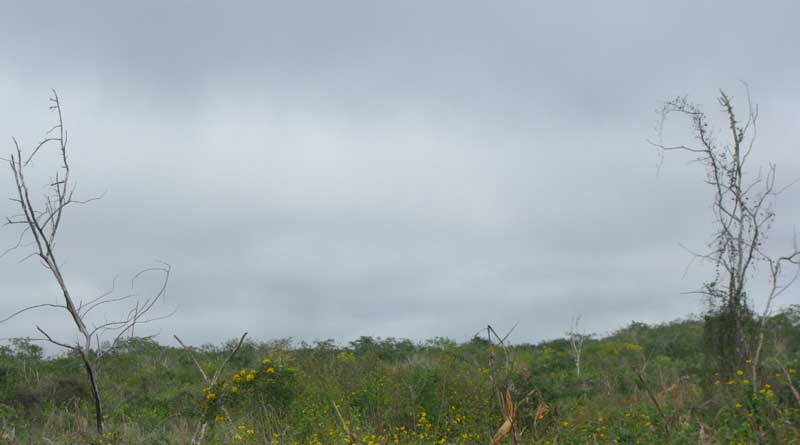Excerpts from Jim Conrad's
Naturalist Newsletter

from the February 12, 2012 Newsletter issued from Hacienda Chichen Resort beside Chichén Itzá Ruins; limestone bedrock; elevation ~39m (~128ft), N20.675°, W88.569°; central Yucatán state, MÉXICO
STRATUS OPACUS CLOUDS
That early morning a heavy fog enshrouded the landscape. As I biked through it, water droplets condensed in my beard and on the hairs of my arms and legs, thrilling me both with the shock of their coldness and the pure delight of being so alive, experiencing it all.
By the time I was well up the little road north of Pisté the fog literally had "lifted," rising from off the land into the air, forming a low overcast. You can see that cloud cover over a fallowing Maya cornfield above.
The cloud is blanket-like, so it's stratus. I know it's low, so it's not altostratus, and it's not lumpy enough to be stratocumulus. There's no rain associated with it so it's not nimbostratus. It's just plain stratus.
Of the kinds of stratus recognized by the World Meteorological Organization, this is the one that's fairly uniform in texture and so dense that it obscures the sun or moon. It's STRATUS OPACUS. If the sun or moon could be seen through it, it'd be Stratus translucidus. If it were more wavy and undulating, it'd be Stratus undulatus. If it were more uniform and foglike in texture -- and maybe 15 minutes earlier it'd been like that -- it'd be Stratus nebulosus.
But it was none of those things. It was just sun-blotting Stratus opacus.